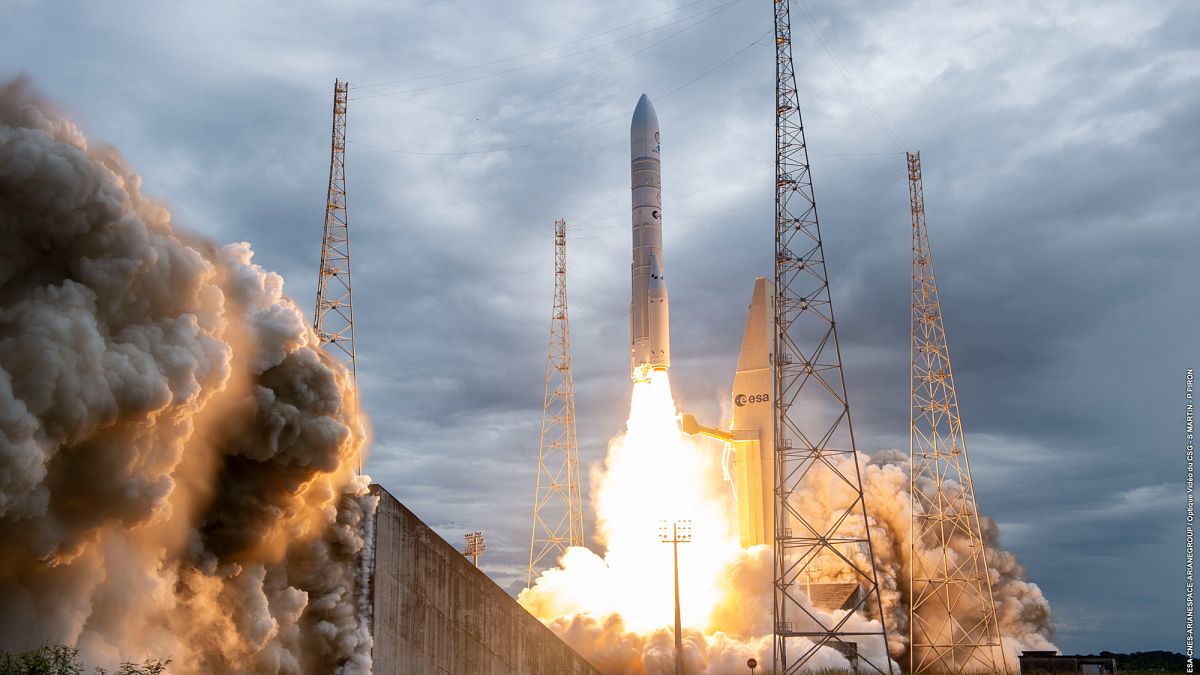Govsatcom, Eutelsat and Iris2 are the European alternatives to Starlink

The result of the war in Ukraine also goes through space. The Starlink American Satellites network is currently essential. It provides connectivity to the Ukrainian forces in the field. But the unpredictable nature of its owner, billionaire Elon Musk, is worrying kyiv and the European Union (EU).
“Elon Musk is, in fact, the tutor of Ukraine on the battlefield. And that is a strategic vulnerability,” says Arthur de Liedkerke, senior director of European Affairs in Rasmussen Global.
However, the MEF Christophe Grudler (Renew Europe) insists that the EU has alternatives that can compete with the US constellation.
“We clearly have the means to replace Starlink.” However, the French MEF does not want to have to resort to this hurried possibility, since it will take some time replacing Elon Musk’s satellites.
“Of course, if Starlink decides to reduce the signal today, we have options, in particular with Govsatcom, which is the European network that we have put in the service and, as of June, it will allow the missing signal of Starlink to Ukraine, if necessary,” he continues.
Govsatcom consists of making existing government spatial capabilities available. The purpose of the system is to provide reliable and safe networks to the EU public authorities. Ukraine has already expressed interest in the system.
According to Christophe Grudler, there is no problem with this solution. “The European Union is very committed to helping Ukraine, so there will certainly be an agreement of all member states to help Ukraine if you stop having a Starlink signal in the future,” he says.
Arthur de Liedkerke, on the other hand, has more reservations for this option. “Govsatcom is a system of insurance satellite government communications whose main objective is to provide reliable, safe and strategically autonomous networks for communication services between EU governments. It is not a substitute for the type of connectivity on the battlefield that we are talking about with Ukraine,” he says. “At this time, it’s not a silver bullet.”
The industrial solution
The other option would be to trust Eutelsat. The Franco-British company can provide quality services equivalent to Starlink because it has also opted for a constellation of low terrestrial orbit.
However, the scale between the two companies is asymmetric. Starlink has 7000 satellites, against 630 from Eutelsat. But Eutelsat also has 35 satellites in the geostationary orbit, that is, at a greater distance from the earth.
However, the Eutelsat option raises an industrial and commercial problem. The American company has about 40,000 terminals in Ukraine, which are not only used by the military. Civilians also use Starlink to connect to the Internet or to make calls. In contrast, the Franco-British company has 2,000 terminals on the site. Other 4,000 can be installed soon and a request for another 10,000 devices has been ordered. Finally, the price of a Starlink terminal is estimated at 500 euros, compared to 9000 euros of Eutesat equipment.
But the European company has political advantages. It does not depend on the United States and has the support of the two European nuclear powers.
“Eutelsat is our European champion, which has convincing functional solutions that we must support through political financing and will,” says Arthur de Liedkerke.
The solution to the future
There is a last medium -term option in the form of European Iris2 project (Satellite resilience, interconnection and safety infrastructure). This constellation of 290 multiple rich satellites, in low orbit (leo of up to 2,000 km) and a half (MEO between 2,000 and 36,000 km), will provide safe connectivity services for the EU. The constellation will offer low latency, that is, ultra fast transmissions near the performance of terrestrial networks.
The 12-year public-private concession agreement for the development and exploitation of IRIS2 was granted to Spacerise. The consortium includes Eutelsat, Hispasat Spanish and Ses Luxembourg, as well as the heavy pesos of Thales, OHB, Airbus Defense and Space, Telespazio, Deutsche Telekom, Orange and Hisdesat.
However, Iris2 is still far from being implemented, since the system will not be completely operational before 2030. But Christophe Grudler, who has been a report from the European Parliament, says the services are available before.
“From 2028, we will have an IRIS2 operational constellation, capable of providing telecommunications services to all member states that wish.
According to Arthur de Liedkerke, this diversity is essential. “It’s about having options. It’s not about not having a single failure.
“We leave the connectivity of the Ukraine War Zone in the hands of a man (…) and this is a strategic vulnerability. If we have options, alternatives, we diversify our associations, we avoid this unique point of failure.”




